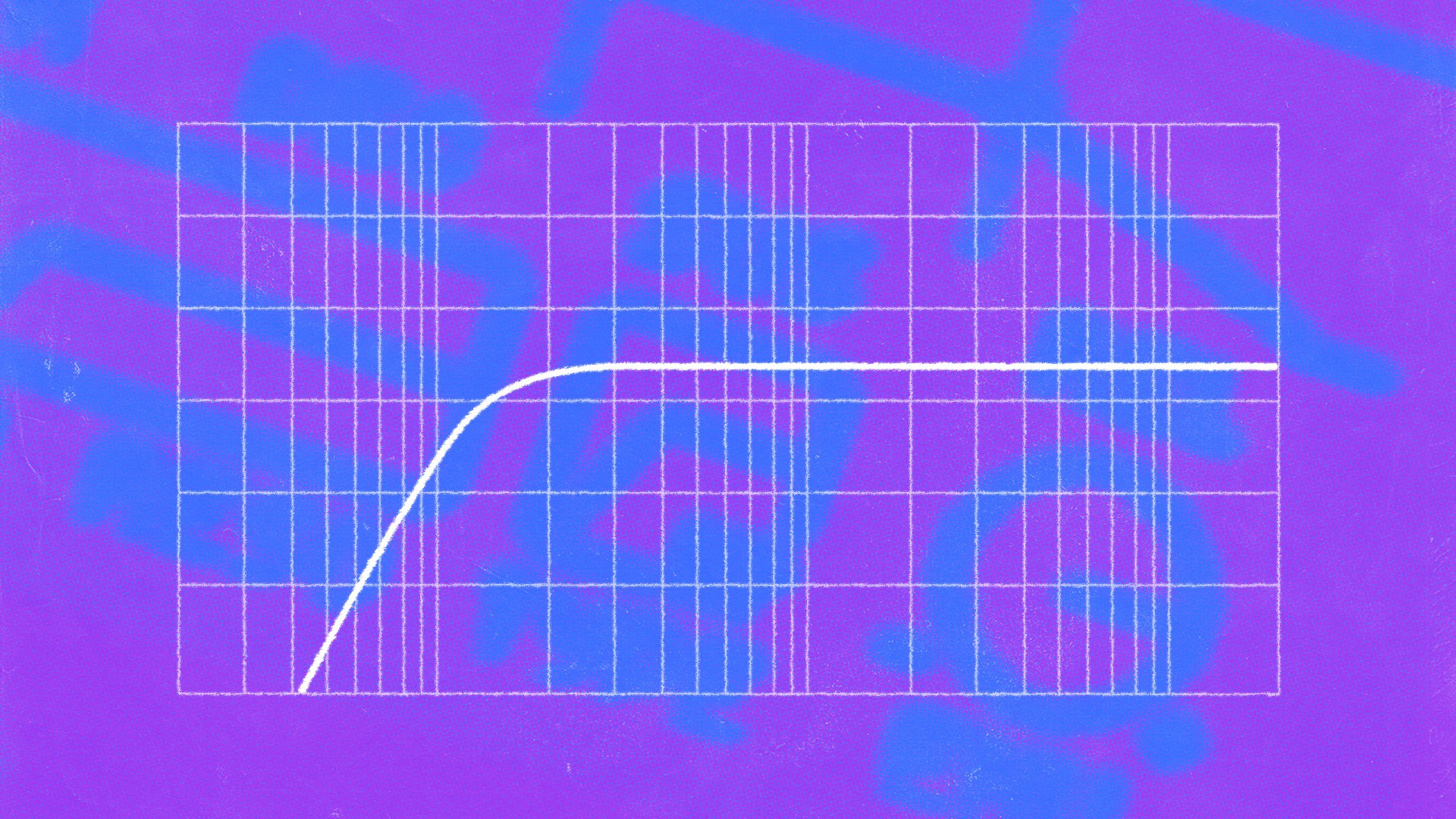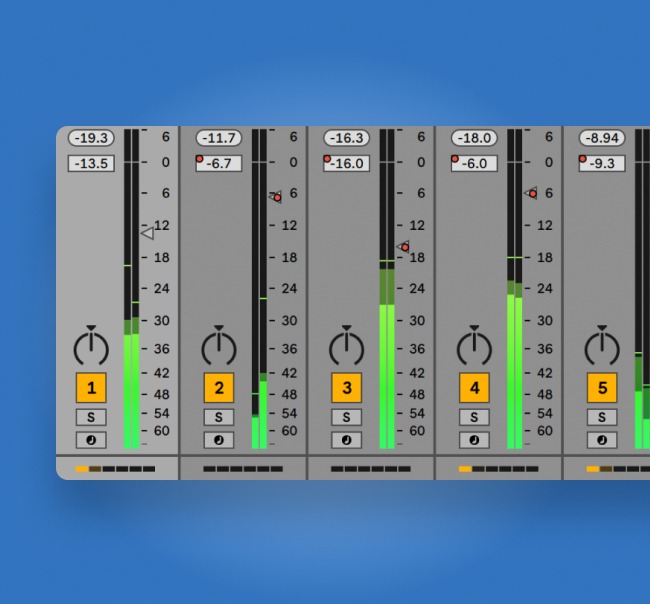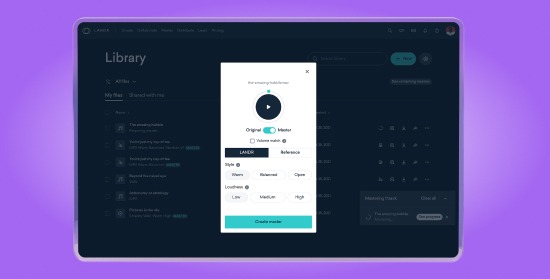
What is a High-pass Filter? How to Clear Up a Muddy Mix

A high-pass filter is one of the most essential frequency shaping tools to understand for emerging producers.
They’re found on EQ plugins, mic preamps, audio interfaces and more.
But if you’ve never used this type of audio tool before, you might not know where to start with a high-pass filter.
Luckily, using one in your mix isn’t difficult once you understand the basics.
But what is a high-pass filter in audio? Read on to learn where they’re used most often and suggest some ways to use them in your own music.
What is a high-pass filter?
A high-pass filter is a type of EQ that reduces low-frequency content in your signal by only allowing frequencies above a cutoff frequency to pass through.
A high-pass filter is a type of EQ that reduces low-frequency content in your signal by only allowing frequencies above a cutoff frequency to pass through.
It’s called a high-pass filter because it lets the high end pass through unchanged while cutting the bass. The term is often abbreviated to HPF for short.
A high-pass filter has a cutoff frequency, a slope and Q factor.
The cutoff frequency of a high-pass filter determines the point where it will begin reducing frequencies. Its slope determines how sharp the cut off effect will be. The Q determines the strength of the resonant peak that appears around the corner frequency.
High-pass vs. low-pass filter
While high-pass filters allow the high frequencies to “pass” through, low-pass filters allow the low frequencies to pass through.
They are two sides of the same coin, but they serve different purposes. High-pass filters are often described as “sharpening” a frequency, while low-pass filters “smooth” it.
Another way to think of it is that high-pass filters are used to remove top-end hisses , while low-pass filters are used to remove aliasing effects, which is the appearance of unwanted sub or bass frequencies.
What does a high-pass filter do?
All musical signals contain sonic energy at different frequencies on the spectrum of audible sound.
A high-pass filter is a type of EQ that reduces low frequency content in your signal by only allowing frequencies above a cutoff frequency to pass through.
Many of the sounds you use in your DAW sessions may include information at the extreme low end of the spectrum that doesn’t contribute positively to the overall sound of your mix. High-pass filters help remedy these. Here are some examples of high-pass filters’ abilities:
- Remove low rumbles: On the low end, boomy low rumbles are one of the most common distracting frequencies. Engineers typically use a high-pass filter to remove them.
- Remove background noise: If your recording has noise from wind, fans or even traffic, high-pass filters can often remove this background noise.
- Fix frequency masking: This happens when multiple sounds occupy the same frequency and is especially important in mixing music. It’s easy to end up with a muddy sound when too many elements are competing for space in the low end.
Make space for your kick and bass: Many sounds don’t need much low end at all to sound full and present in the mix. You might be surprised how much space you can clear up for low end instruments like kick and bass to take charge.
In fact, many sounds don’t need much low end at all to sound full and present in the mix. You might be surprised how much space you can clear up for low end instruments like to kick and bass to take charge.
How to set your high-pass filter
Some high-pass filters have a single setting that can either be engaged, or disengaged. Others are more configurable like a band of EQ.
Some high-pass filters have a single setting that can either be engaged, or disengaged. Others are more configurable like a band of EQ.
The simplest style of high-pass filter is often set at a fixed frequency and slope. These are the type most commonly found on microphones and microphone preamps.
Built-in high-pass filters are meant specifically to reduce the negative effect of very low rumbling sounds. For example, a vocalist shifting their standing position in front of a microphone may introduce some low frequency noise.
For this reason, they’re often set to a fairly low frequency like 50 or 75 Hz. Try engaging the HPF while tracking and listen carefully to see if it cleans up any undesirable parts of the sound in the deep low end.
Hot tip: Microphone high-pass filters are sometimes used to help reduce proximity effect. This is the increase in bass frequencies that results from a microphone placed very close to the sound source. It often occurs during vocal tracking if the singer is close to the mic for an intimate sound. Try using your high-pass filter if you notice bass buildup from proximity effect on vocals.
EQ Filters
Once you’ve recorded your sounds into your DAW, you can use a more flexible high-pass filter to dial out the right amount of bass.
This type of high-pass filter behaves more like a band of EQ. In fact, you’ll most commonly find them on EQ plugins, especially multi-band digital EQs with variable filter types.
With this type of EQ plugin you can set the slope and precise cutoff frequency of the high-pass filter to make sure you’re cutting just the right range of frequencies.
To set it, start with the default filter slope and slowly sweep the cutoff frequency up from its low limit.
Close your eyes and stop increasing the frequency when you hear the filter making a negative impact on the sound. You might be surprised how much low end you can reduce!
In general, you’ll want to apply this technique to any sound with low end energy that doesn’t belong to the bass or rhythm section of the mix.
Hot tip: The best way to control low end information in your mix is to capture it well at the start. That means placing your microphones or programming your synths so that low frequencies aren’t too powerful or boomy to begin with.
HPFs are less common than low-pass filters in synthesis, but they’re capable of some unique sounds.
Where else might you see a high-pass filter?
HPFs are most common in EQ situations, but they can be found all over music production.
One common place they appear is in the filter section of some synthesizers. HPFs are less common than low-pass filters in this application, but they’re capable of some unique sounds.
Sweeping a high-pass filter up to a high midrange frequency can create a lo-fi sound that’s perfect to create contrast during a breakdown.
In fact you’ll see specialized high-pass filter EQ sections on live DJ mixers that are designed to produce exactly this effect.
On a synth you can also add resonance to create a unique sound that slices through the mix at a narrow frequency.
Try experimenting with different filter types to create new sounds with your synths.
Hot tip: If you’re looking for a filter with more creative applications—especially for lo-fi and synth sound design, check out Samplex V3. It comes as part of LANDR’s Studio subscription that gives access to ton of excellent premium plugins, LANDR’s industry-leading AI mastering tool, digital distribution, its royalty-samples marketplace and much more.
Filtration system
Ultimately, what is a high-pass filter in audio? It’s a key tool in every producer’s toolkit.
Knowing how and where to use them will help you build a cleaner mix with more definition and less muddiness.
If you’ve made it through this article you’ll have a great start for using high-pass filters in your own mixes. For an even better start, join the LANDR community. You’ll get access to exclusive plugins, plus support, tips and tutorials from other musicians to help you master all aspects of producing.
Gear guides, tips, tutorials, inspiration and more—delivered weekly.
Keep up with the LANDR Blog.




